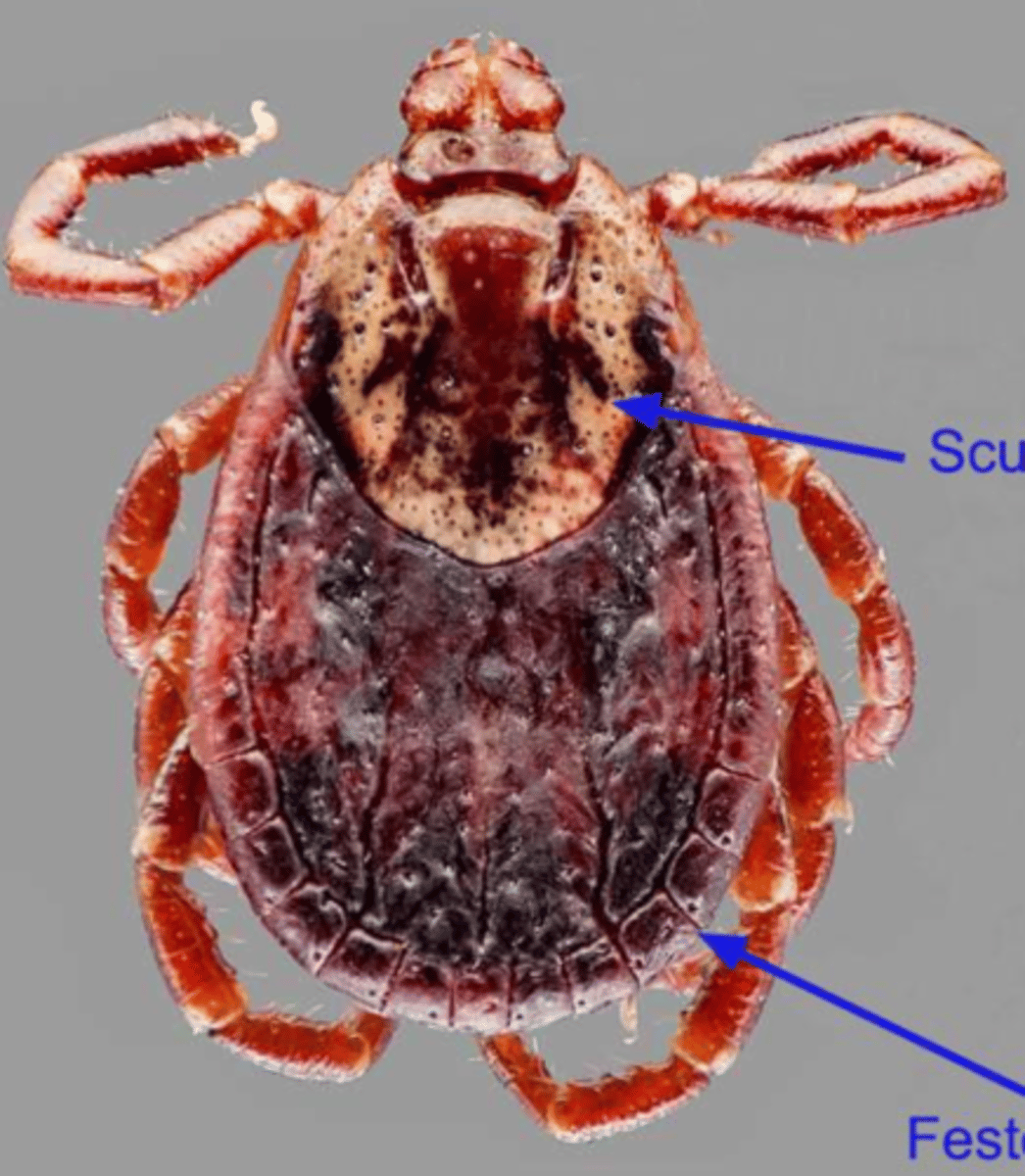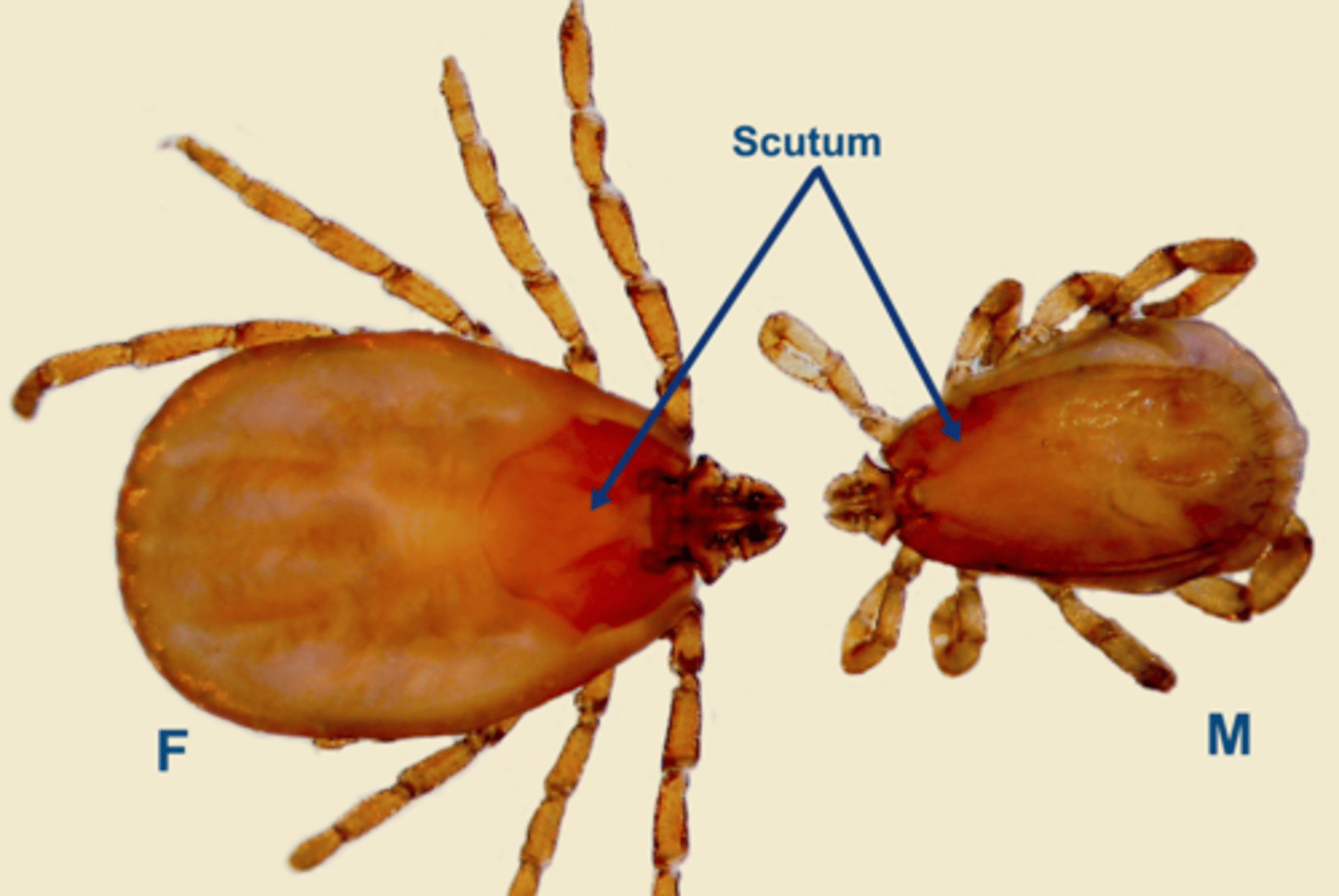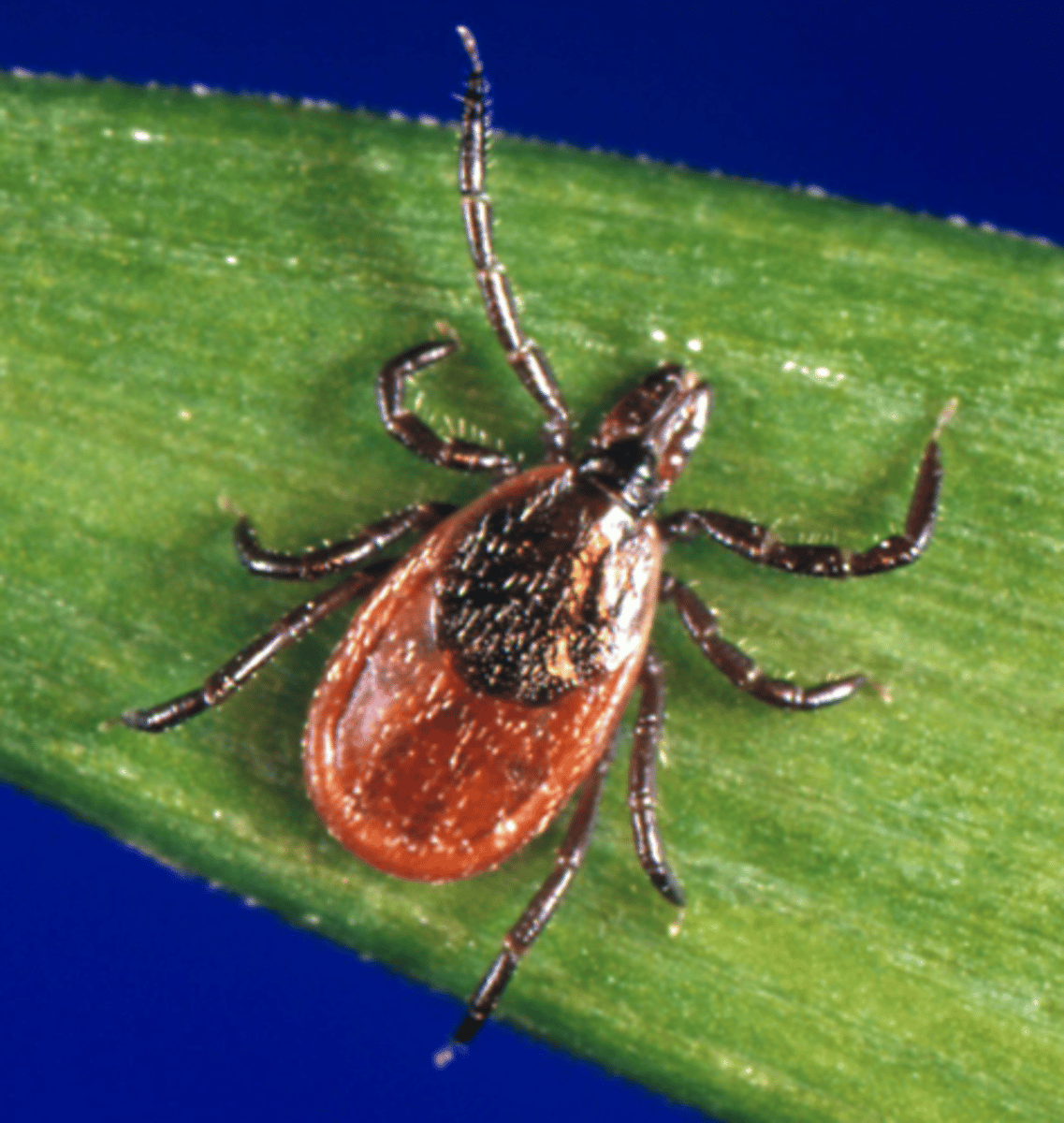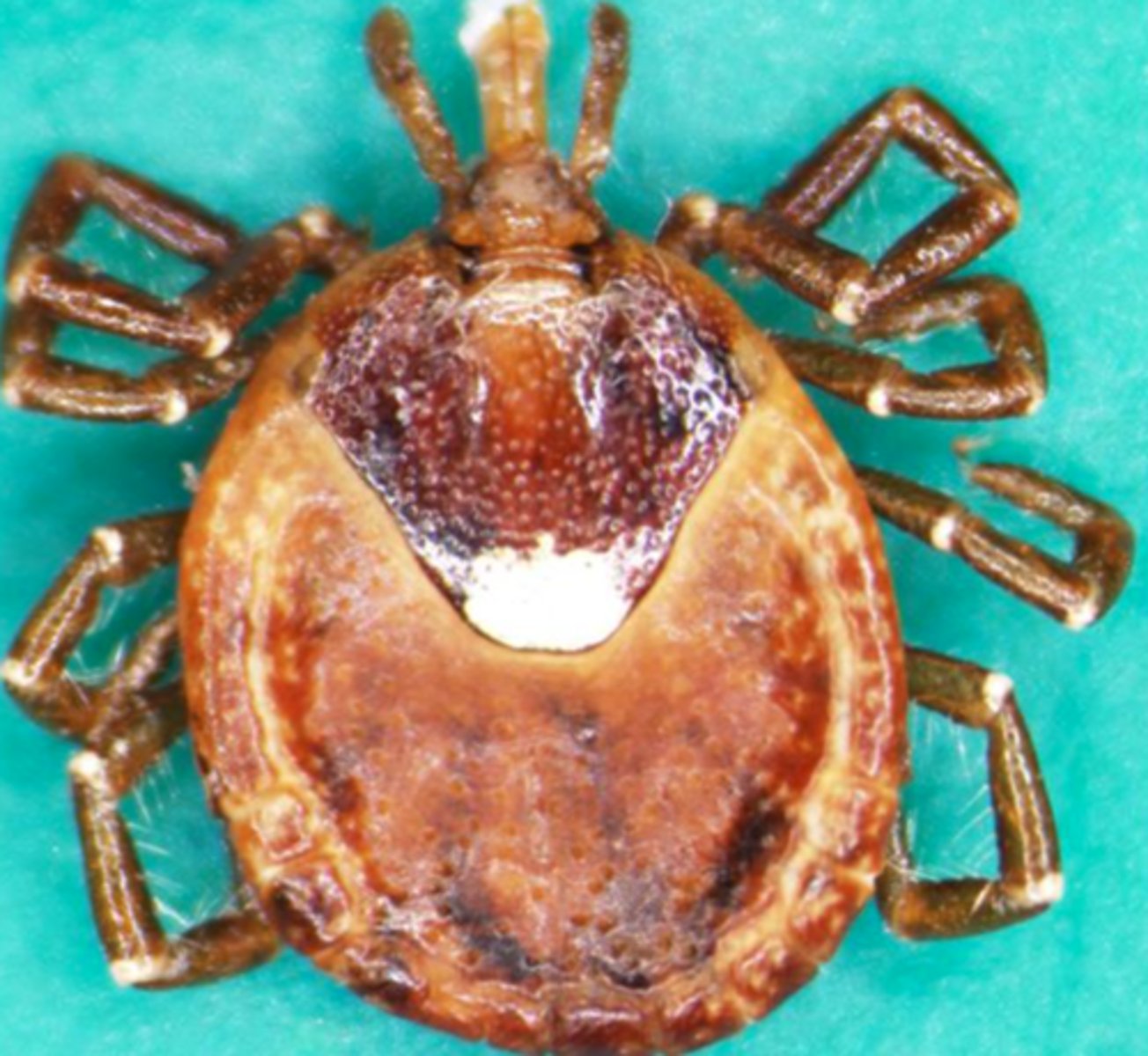Veterinary Practice Management - Ticks
1/17
There's no tags or description
Looks like no tags are added yet.
Name | Mastery | Learn | Test | Matching | Spaced |
|---|
No study sessions yet.
18 Terms
Dermacentor variabilis (3-host tick with each life stage feeding on a different host)
Reddish-brown, ornate ectoparasite known as the American dog tick

• None in a light or moderate infestation
• Heavy infestations may cause alopecia and pruritus around the tick bite
What are the clinical signs of ticks?
• Larvae and nymphs host on mice, rabbits, or gophers
• Adults host on wild ungulates, livestock, dogs, and people
Describe the 3-host tick life cycle of dermacentor variabilis
• Rocky Mountain Spotted Fever (Rickettsia rickettsii)
• Tularemia (Francisella tularensis)
• Ehrlichiosis (Ehrlichia canis)
What is the zoonotic potential of dermacentor variabilis?
Rickettsia rickettsii
What is the scientific name for Rocky Mountain Spotted Fever?
1 - Avoid tick habitat
2 - Thorough tick checks (remove ticks within 6-24 hour)
3 - Use tick prevention and reduce exposure
Identify the three tiers of tick control
• Remove ticks within 6-24 hour with tweezers or hemostats
• Grab the mouth parts as close to the skin as possible using gentle pressure • • Ticks secrete a glue patch and embed their mouth parts in the skin
• Bites should be cleaned and monitored
What is the ideal protocol for tick removal?
Isoxazolines such as Simperica, Bravecto, and NexGard
What is the ideal method for tick prevention?
Rhipicephalus sanguineus (a 3-host tick)
A medium-sized, yellowish-brown ectoparasite known as the Brown dog tick

• Life cycle can be completed in 8 weeks, but usually takes 4-5 months
• Unfed larvae and nymphs can live for months in the environment, and adults for 1-2 years
• Each life cycle stage comes off the dog and moults in the environment
Describe the life cycle of rhipicephalus sanguineus
• Rocky mountain spotted fever
• Babesiosis
• Ehrlichiosis
• Anaplasmosis
What is the zoonotic potential of rhipicephalus sanguineus?
Ixodes scapularis (a 3-host tick)
Small, reddish-brown, teardrop shaped tick known as the Black-legged tick or Deer tick

• Entire life cycle is completed in 3 years, 1 year for each life stage
• Larvae and nymphs host on small rodents or songbirds
• Adults host on white-tailed deer, people, cats, and dogs
Describe the life cycle of ixodes scapularis
Primary vector for Lyme disease caused by the spirochete Borrelia burgdorferi
What is the zoonotic potential for ixodes scapularis?
Amblyomma americanum (aggressive, fast, and love to bite)
The primary tick of Southeast US known as the Lone star tick

• Can act as a vector for Ehrlichia, Rickettsia, and Borrelia starii
• Bites have been shown to cause a sensitivity red meat characterized by GI disturbance, rashes, hives, or anaphylaxis
What is the public health significance of amblyomma americanum?
• Dermacentor variabilis (American dog tick)
• Rhipicephalus sanguineus (Brown dog tick)
• Ixodes scapularis (Black-legged tick or Deer tick)
Which of the ticks are considered to be 3-host ticks?
Amblyomma americanum (Lone star tick)
Which tick is known to cause a carbohydrate on mammalian eat cells called alpha-gal syndrome?